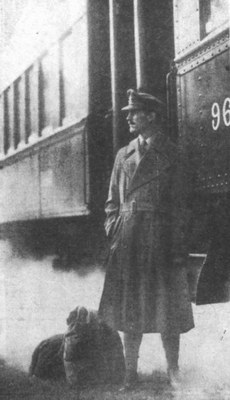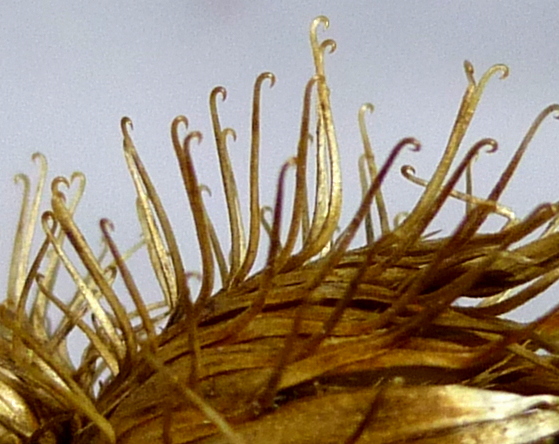Growth is good, isn’t it?
Growth is good sounds like a marketing rule but the story of one famous British brand suggests otherwise.
That brand’s story begins in 1856, when a 21-year old, former draper’s apprentice called Thomas Burberry opened a store focusing on outdoor clothing. In 1880, he introduced gabardine, a hardwearing, water-resistant yet breathable fabric into his jackets and coats.
In 1911, Burberrys as it then known were chosen as outfitters for Roald Amundsen’s expedition to the South Pole. Perhaps the biggest turning point for the brand came in 1914, when Burberrys were commissioned by the War Office to adapt its officer’s coat to suit the awful conditions in Belgium and France. The result was the “trench coat”.
After the war, the trench coat became popular with civilians and in the 1920s what was to become the iconic beige Burberry check was created. It was used as a lining in the best-selling trench coats.
In 1955 Burberrys was taken over by Great Universal Stores who instigated a period of innovation in a drive for growth. Base products like the trench coat, the Piccadilly raincoat and the Cashmere scarf were all relaunched, all with much greater focus on the Burberry check. Burberrys became one of the most sought after luxury clothing brands in the world, worn by a host of stars including Humphrey Bogart, Audrey Hepburn, Peter Sellers and Ronald Reagan
During the 70s, 80s and 90s wanting to exploit the appeal of the brand, Burberry started signing more and more licensing agreements with manufacturers from all around the world, to (mass) produce new, and what they hoped were complementary items. These included suits, trousers, shirts, sportswear, accessories but also pet-ware, baseball caps and buggies. Nearly all featured the beige check.
However as the new century arrived the image of the brand started to decline, rapidly and dramatically. Burberry went from being perceived as a premium, luxury brand to one that anyone and everyone could, and did, wear.
Burberry became associated with “chav” culture, a term defined in the Oxford English Dictionary as “a young lower-class person who displays brash and loutish behaviour and wears real or imitation designer clothes”. The availability of lower priced products and the proliferation of counterfeits that ‘borrowed’ the Burberry’s check, as well as adoption by B,C and D-list celebrities and football hooligans wasn’t consistent with an exclusive premium image.
 A much publicised photo of a former ‘star’ of television soap-opera ‘Eastenders’ in 2003 prompted one commentator to write “admirers of Burberry’s trademark check sighed and slung it to the back of the wardrobe after Daniella Westbrook, a self-confessed addict, publicly overdosed on Burberry”
A much publicised photo of a former ‘star’ of television soap-opera ‘Eastenders’ in 2003 prompted one commentator to write “admirers of Burberry’s trademark check sighed and slung it to the back of the wardrobe after Daniella Westbrook, a self-confessed addict, publicly overdosed on Burberry”
In 2006, there were changes at the top of Burberry. Rose Marie Bravo, the Chief Executive who had led to the brand to mass market “success” through licensing, retired.
Angela Ahrendts replaced her and when later interviewed by the Harvard Business Review she remembered the early days of her tenure…
When I became the CEO of Burberry, in July 2006, luxury was one of the fastest-growing sectors in the world.
With its rich history, centred on trench coats that were recognized around the world, the Burberry brand should have had many advantages.
But as I watched my top managers arrive for our first strategic planning meeting, something struck me right away. They had flown in from around the world to classic British weather, grey and damp, but not one of these more than 60 people was wearing a Burberry trench coat.
I doubted that many of them even owned one. If our top people weren’t buying our products, despite the great discount they could get, how could we expect customers to pay full price for them?”
She was quick to identify the root of the problem
 “(Burberry) had lost its focus in the process of global expansion. We had 23 licensees around the world, each doing something different. We were selling products such as dog cover-ups and leashes. One of our highest-profile stores, on Bond Street in London, had a whole section of kilts. There’s nothing wrong with any of those products individually, but together they added up to just a lot of stuff—something for everybody, but not much of it exclusive or compelling.
“(Burberry) had lost its focus in the process of global expansion. We had 23 licensees around the world, each doing something different. We were selling products such as dog cover-ups and leashes. One of our highest-profile stores, on Bond Street in London, had a whole section of kilts. There’s nothing wrong with any of those products individually, but together they added up to just a lot of stuff—something for everybody, but not much of it exclusive or compelling.
In luxury, ubiquity will kill you—it means you’re not really luxury anymore – and we were becoming ubiquitous.”
There was no central control, different factories around the world were doing their own thing, and in many cases they didn’t even feature coats. Ahrendts set about changing things.
She appointed the designer Christopher Bailey as the “brand czar” and gave him the ultimate say in the brand look and feel “I told them ‘Anything that the consumer sees—anywhere in the world—will go through his office. No exceptions.’ “
She closed the factories in New Jersey and Wales – the latter had been making polo shirts—and began re-investing in the Castleford facility, which made the heritage rainwear. She and Bailey also took the brand back to its origins:
“When I became CEO, outerwear represented only about 20% of our global brand business. Fashion apparel and check accessories were leading our strategy.
Surveying the industry, we realized that Burberry was the only iconic luxury company that wasn’t capitalizing on its historical core. We weren’t proud of it. We weren’t innovating around it.
The decision to focus on our heritage opened up a wealth of creativity. Christopher and the designers and marketers all started dreaming up ways to reinforce the idea that everything we did—from our runway shows to our stores—should start with the ethos of the trench.”
They removed the brand’s iconic check-pattern from all but 10% of the company’s products, bought themselves out of the licensing deals and even out of the Spanish franchise that was worth 20% of group revenues.
![]()
A bold and brave strategy which hurt at first but which then started to pay dividends, big dividends.
In that same 2013 HBR interview, Ahrendts could proudly claim “Today 60% of our business is apparel, and outerwear makes up more than half of that. At the end of fiscal 2012, Burberry’s revenues and operating income had doubled over the previous five years, to $3 billion and $600 million, respectively.
She also noted that pride in the brand had returned too
“If you (now) ask a Burberry senior executive how many trench coats he or she owns, the answer is likely to be eight or nine. Everyone has a packable version. Everyone has a white one. Everyone has an evening one. We have all different lengths. As for me, I don’t have an exact count, but I can safely confess to owning a dozen.”


 That story begins in the Jura Mountains; the year is 1941 and a Swiss engineer called George de Mestral and his dog have gone out hunting for the day.
That story begins in the Jura Mountains; the year is 1941 and a Swiss engineer called George de Mestral and his dog have gone out hunting for the day.

 Nowadays Velcro is used in everything from blood pressure gauges to floor mats in cars and, of course, on the front of children’s shoes. It was used in the first ever human artificial heart transplant.
Nowadays Velcro is used in everything from blood pressure gauges to floor mats in cars and, of course, on the front of children’s shoes. It was used in the first ever human artificial heart transplant.

 The story starts with the birth of Franklin Clarence Mars on September 23, 1883 in Newport, Minnesota. As a child, Frank suffered from polio, which was to leave him disabled. One consequence of this was that Frank wasn’t as mobile as other children and so spent a lot of time watching his mother bake and cook, including watching her make fresh chocolates.
The story starts with the birth of Franklin Clarence Mars on September 23, 1883 in Newport, Minnesota. As a child, Frank suffered from polio, which was to leave him disabled. One consequence of this was that Frank wasn’t as mobile as other children and so spent a lot of time watching his mother bake and cook, including watching her make fresh chocolates.
 Within a year, Mars’ sales jumped by tenfold, grossing about $800,000 (equivalent to about $11 million today). Forrest was to say later, “that damn thing sold with no advertising.”
Within a year, Mars’ sales jumped by tenfold, grossing about $800,000 (equivalent to about $11 million today). Forrest was to say later, “that damn thing sold with no advertising.”
 Forrest, and Mars internationally, were to go on to launch a version of his new Mars Bar without the caramel layer.
Forrest, and Mars internationally, were to go on to launch a version of his new Mars Bar without the caramel layer.

 For most of the early and mid-20th century, Hoover dominated the electric vacuum cleaner industry in the UK, to the point where the “Hoover” brand name became synonymous with vacuum cleaners and vacuuming in the United Kingdom and Ireland. People did the “hoovering” no matter what brand of vacuum cleaner they were actually using.
For most of the early and mid-20th century, Hoover dominated the electric vacuum cleaner industry in the UK, to the point where the “Hoover” brand name became synonymous with vacuum cleaners and vacuuming in the United Kingdom and Ireland. People did the “hoovering” no matter what brand of vacuum cleaner they were actually using.
